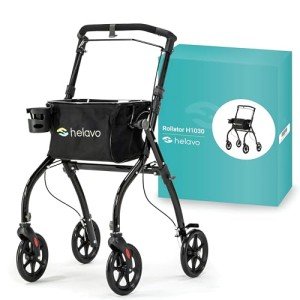10 Things That Your Family Teach You About Reliable Walker
페이지 정보

본문
The Reliable Walker: Choosing the Right Mobility Aid for Your Needs
In an ever-evolving world where mobility challenges can occur for different factors, a reliable walker can considerably improve a person's lifestyle. Individuals trying to find independence in their motion discover that a walker, often described as a walking aid, plays an essential role in their daily activities, whether they are recovering from surgery, handling chronic pain, or experiencing age-related mobility issues.

In this blog post, we will talk about the significance of a reliable walker, the different types offered, how to select the best one for your requirements, and some frequently asked concerns.
Comprehending Walkers
Walkers are mobility devices that aid people with walking troubles. They offer stability and support, assisting to avoid falls and improving self-confidence when navigating.
Types of Walkers
There are numerous kinds of walkers readily available, and comprehending the differences can assist you make an educated choice. Below is a table summarizing the primary kinds of walkers.
| Kind of Walker | Description | Benefits | Downsides |
|---|---|---|---|
| Requirement Walker | A fundamental walker without wheels, needing users to raise it to move. | Supplies maximum stability; basic design. | Can be troublesome; less maneuverable. |
| Two-Wheeled Walker | Geared up with 2 wheels at the front for simpler motion. | Much easier to move; more lightweight. | Less stable than a basic walker. |
| Four-Wheeled Walker | A wheeled walker with four wheels, typically with a Padded Seat Walker and hand brakes. | Extremely maneuverable; suitable for outdoor usage; stability with seating. | Requires some upper body strength to operate the brakes. |
| Rollator | A four-wheeled walker with a seat and storage area. | Suitable for longer distances; comfortable seating alternative. | Less stability than standard walkers; can be more costly. |
| Hemi Walker | Designed for those who can use just one hand or lower limb. | Helpful for one-handed support; lightweight. | May not supply as much support as standard options. |
Secret Factors to Consider When Choosing a Walker
Selecting the ideal walker is important for security and independence. Here are some essential factors to think about:
1. User's Physical Condition
- Examine the user's balance, strength, and variety of motion. Some users may require more support and stability, while others may prefer something lighter and more mobile.
2. Planned Use
- Think about where the walker will mostly be used-- inside your home, outdoors, or both. Walkers designed for outdoor use usually feature larger wheels.
3. Weight Capacity
- Ensure that the walker can support the user's weight. The majority of walkers feature weight capability specs, typically ranging from 250 to 500 pounds.
4. Adjustability
- Search for a walker that can be changed in height to make sure appropriate posture and convenience while walking.
5. Additional Features
- Many walkers included features such as brakes, seats, baskets, and even built-in lights. Assess which features are needed for the user's needs.
6. Looks
- While functionality is important, many modern walkers are developed with looks in mind. Choose one that the user feels excellent about utilizing.
The Benefits of a Reliable Walker
Using a reliable walker has several benefits, consisting of:
- Increased Independence: Users can move around on their own without relying greatly on others for support.
- Increased Confidence: A stable walker provides users the security they need to move freely, lowering the fear of falling.
- Enhanced Stability: Walkers significantly enhance balance, especially for those with mobility impairments.
- Enhanced Quality of Life: With improved mobility, users can engage more actively in social, recreational, and day-to-day activities.
Frequently Asked Questions (FAQ)
1. How do I understand if I need a walker?
If you discover walking to be challenging, experience frequent falls, have actually recently had surgery, or have persistent conditions impacting your mobility, it might be time to think about a walker.
2. Can I utilize a walker on outdoor surface areas?
Yes, however think about getting a four-wheeled walker or a rollator developed specifically for outdoor terrains, as they usually have bigger wheels for better maneuverability.
3. How can I change my walker for the very best fit?
Most walkers have height-Adjustable Walker legs. Stand in your shoes, and with your arms relaxed at your sides, the top of the walker need to be at wrist level.
4. How do I preserve my walker?
Routinely check the walker for any loose screws or parts, make sure the wheels are moving efficiently, and tidy it occasionally to preserve its condition.
5. How can I develop my self-confidence while utilizing a walker?
Start utilizing the walker in familiar and safe environments. Gradually increase the complexity of your environments as you become more comfortable.
In conclusion, a reliable walker is not simply a mobility aid; it's a method to greater self-reliance, security, and improved quality of life. Comprehending the kinds of walkers available and assessing individual needs can help individuals make notified choices. Whether it's a basic Heavy-Duty Walker or a modern rollator, the best equipment fosters self-reliance and confidence in mobility.
If you or a loved one deals with mobility obstacles, think about investing in a walker that fulfills personal needs, improves mobility, and ultimately, enriches day-to-day living. With the right choice, users can take back control of their motion, fostering a more active and satisfying life.

- 이전글15 Reasons To Not Overlook Road Traffic Regulations 25.09.12
- 다음글The 10 Scariest Things About Low Fee Crypto Exchange 25.09.12
댓글목록
등록된 댓글이 없습니다.
